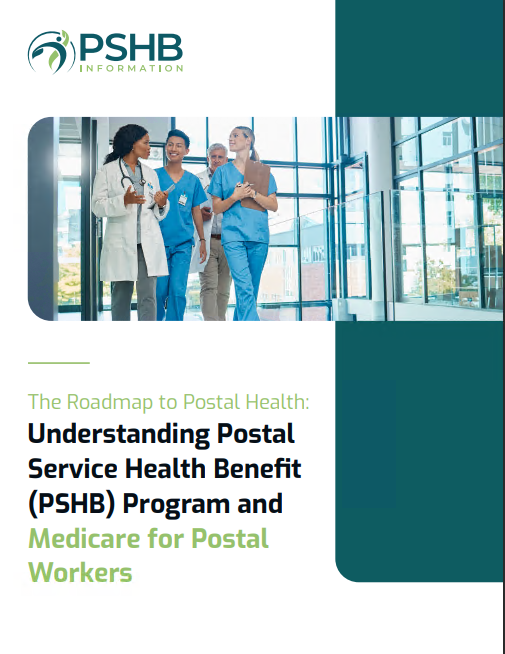Key Takeaways
- The transition from FEHB to PSHB will bring changes to premium adjustments that postal workers need to be prepared for.
- USPS workers can make necessary plan changes during the PSHB Open Season from November 11, 2024, to December 9, 2024, before the official switch on January 1, 2025.
What is the PSHB?
The Postal Service Health Benefits (PSHB) program is a new health insurance option designed specifically for employees and retirees of the United States Postal Service (USPS). It will officially replace the Federal Employees Health Benefits (FEHB) program starting January 1, 2025. The goal of PSHB is to provide health insurance coverage that is more tailored to postal workers’ needs while separating USPS workers from the broader federal workforce in terms of their benefits. This switch may raise several questions for current employees and retirees regarding how these changes will affect their healthcare and costs. Understanding the details of the PSHB will help USPS workers and retirees navigate the transition more smoothly, especially with the upcoming open season approaching fast.Open Season Dates You Need to Know
For those who want to make changes to their health insurance or simply explore new options under the PSHB program, the Open Season for PSHB is scheduled from November 11, 2024, to December 9, 2024. During this time, all USPS workers and retirees will have the opportunity to review their new plan options, adjust coverage, and finalize decisions before the program takes effect on January 1, 2025. If you don’t take action during the Open Season, you may be automatically enrolled in a default plan, so it’s crucial to mark these dates and take action if needed.How Will the Premium Adjustments Affect You?
One of the major questions on everyone’s mind revolves around premium adjustments under the new PSHB program. While FEHB premiums are already familiar territory for postal workers, PSHB may introduce changes in costs, and how these premiums are structured could shift. However, the specific premium rates will vary based on factors such as the plan you choose, your coverage level (self-only, self-plus-one, or family), and whether you are an active worker or a retiree. While we can’t discuss the exact premium amounts (since they will be disclosed during Open Season), here are a few things postal workers can expect:- Higher or Lower Premiums Depending on Coverage: Premiums under PSHB might be adjusted based on the distinct needs of USPS workers, meaning that while some could experience slight increases, others may see reductions. It’s important to review the specifics during the upcoming Open Season.
- Potential Adjustments for Retirees: For retirees, premium adjustments may differ based on your health needs and Medicare integration. Retirees who qualify for Medicare may see different cost structures than active workers. Many retirees will likely want to evaluate how Medicare coordination affects their health benefits and premiums under PSHB.
- Plan Variety and Costs: USPS employees will likely have several plan options to choose from, similar to the structure of FEHB. Each option may carry different premiums depending on the coverage they offer. This makes it crucial to assess each plan’s benefits and its associated premium cost before making a decision.
What Happens to FEHB?
The Federal Employees Health Benefits (FEHB) program has served USPS workers for years, but with the switch to PSHB, FEHB will no longer be available to postal employees and retirees starting in 2025. This separation from FEHB is a big shift, as postal workers have relied on the same health benefits as the rest of the federal workforce. However, the government has designed PSHB to mirror many of the features that FEHB provided while focusing more on the unique health needs of postal workers. Does this mean postal employees are losing their health benefits? Not at all. While you’ll no longer be part of the FEHB, the PSHB program will offer similar coverage, and in some cases, might be more cost-effective or offer better-suited benefits. The key is making sure you’re aware of the changes and how they may apply to you, particularly in terms of costs and specific benefits.How Will This Impact Medicare-Eligible Retirees?
If you are a Medicare-eligible retiree, it’s important to know how PSHB and Medicare will coordinate. Retirees who are eligible for Medicare will likely need to enroll in Medicare Part B, and failure to do so could affect your PSHB coverage. Medicare will typically serve as your primary insurance, with PSHB acting as secondary coverage, which could reduce out-of-pocket expenses. However, it’s essential to compare how this coordination works and what it means for your premiums, so you avoid surprises in the future.Preparing for Open Season: What Should You Do?
With the transition to PSHB coming up fast, the best way to prepare is to take advantage of the PSHB Open Season. Here’s a step-by-step guide on what you should be doing:- Mark Your Calendar: The Open Season dates are from November 11, 2024, to December 9, 2024. Set a reminder so you don’t miss your opportunity to review your options and make any necessary changes.
- Gather Information: By the time Open Season begins, detailed plan options and premiums for PSHB will be available. You should take time to thoroughly research the different plans, understanding what coverage is offered and how much it will cost. Make sure to compare plans based on your needs, whether you’re an active employee or a retiree.
- Consider Your Current Health Needs: Do you expect to need more medical services in the coming year? Are you planning for retirement soon? Will your family’s coverage needs change? These are all important questions to consider when selecting a PSHB plan.
- Understand the Premium Structure: Familiarize yourself with how PSHB premiums will differ from what you’re used to under FEHB. If you’re an active worker, make sure you understand what your paycheck deductions will look like. For retirees, it’s important to see how Medicare integration affects your costs.
- Seek Advice if Needed: If you are unsure about which plan to choose, consult with a licensed insurance agent who can help you navigate your options. It’s better to ask questions now than face unexpected costs or coverage gaps later.









